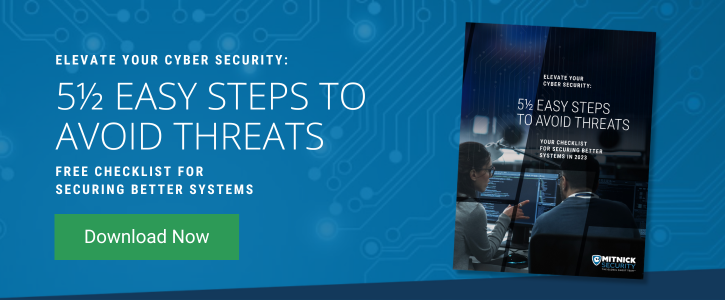Although it may be standard company policy for your employees to stay alert and proactive when using your organization’s protected internal network and systems, it can be difficult to maintain this same level of cybersecurity awareness when it comes to remote workers. According to Upwork, it's expected that 73% of all work teams will have remote workers by 2028.
With the increase in remote and hybrid workers, companies need to be aware of the cyber security threats they become vulnerable to in these setups. Below, we’ll cover the five common remote work security threats organizations need to know and how to minimize the risk for a secure remote worker experience.
5 Common Security Threats With Remote Work
1. Using Personal Devices for Business and Personal Use
BYOD (Bring Your Own Devices) is now a common practice for employees who work both from home and in-office. With this trend comes the risk of employees storing confidential data on their personal devices. Sensitive information may not be properly stored, handled, or removed, thus potentially opening the door for a threat actor to compromise company and personal information.
Common types of BYOD include:
- Smartphones
- Laptops
- Desktop computers
- Tablets
Additionally, a BYOD policy creates a web of expanded attack surfaces that companies have to secure. With a possible considerable number of external devices connecting to your organization’s network, it’s that much easier for threat actors to breach your defenses.
Risk Mitigation Technique
To reduce the risk of a breach through unauthorized access to a personal device, utilize a zero-trust framework to ensure that the device is not being misused in the event of personal use, loss, or theft.
2. Connecting to Unsecured Internet Networks
With remote working comes remote access. Employees who work from home or other remote locations may use public Wi-Fi or an unsecured home network. Threat actors can intercept signals and use other tactics against your employee if they are on an unprotected network.
Risk Mitigation Technique
To reduce the risk to your employees and your organization, you can issue secure remote access guidelines, like using a VPN. Security awareness training can help employees feel comfortable with safety protocols, and they may be more likely to comply once they understand the risks.
3. Susceptibility to Phishing or Email Scams
In a relaxed home environment, it may be easier for a threat actor to use social engineering tactics to compromise your employees’ devices. One such attack type — phishing — can occur when an employee clicks on a link in an email. The email may look like it comes from a valid source, but it is actually a threat actor’s attempt to exploit their victim for personal gain.
A similar yet more targeted attack, spear phishing, is responsible for the initial launch and resulting data breach of 91% of cyberattacks. Remote employees may also put your organization at risk if they open other email scams and SMS messaging scams, especially if they’re using their personal email accounts on a work-issued laptop.
Risk Mitigation Technique
Consider setting guidelines for email use on work-issued devices. Additionally, training your employees to recognize the most common signs of a phishing attempt could prevent a catastrophic data breach. Advise your employees to check with their coworkers and supervisor should they receive a suspicious email or message on a networking platform claiming to be from your company.
4. Poor Password or Login Management
When working from home, employees likely use their own passwords and login credentials to access your company’s applications, work accounts, and more. Unfortunately, an estimated 87% of millennials surveyed admitted to reusing passwords. A weak password or refusal to use multi-factor authentication (MFA) makes your organization vulnerable to outside threats.
Risk Mitigation Technique
You can reduce the risk by enforcing a strong password policy that requires unique passwords for different sites and applications. For extra protection, consider enabling and encouraging the use of MFA.
5. Working With Unencrypted Files
Remote workers may not have the same firewalls and other forms of security that they would at the office. Working with unencrypted files remotely allows bad actors an easy access point to your organization’s private data. A threat actor could then steal and use this data for identity fraud, random, or extortion.
Risk Mitigation Technique
To protect your organization, implement encryption best practices and use secure cloud-based file sharing. Talk to your team about the importance of not sending valuable information via email or other less secure methods.
Elevate Your Security in Remote Environments
Although remote work environments come with many benefits, unsafe practices can lead to security disasters. With the right training and guidelines, you and your team can work safely no matter the location.
Discover how to shore up vulnerabilities of all kinds and strengthen the security posture of your organization by downloading your copy of the “Learn to Avoid Cyber Threats in 5 ½ Easy Steps” guide.




-Copy1.jpg?width=350&name=Mitnick-Security-093-Enhanced-NR-Edit-Edit-Edit-Edit_(2)-Copy1.jpg)